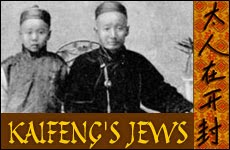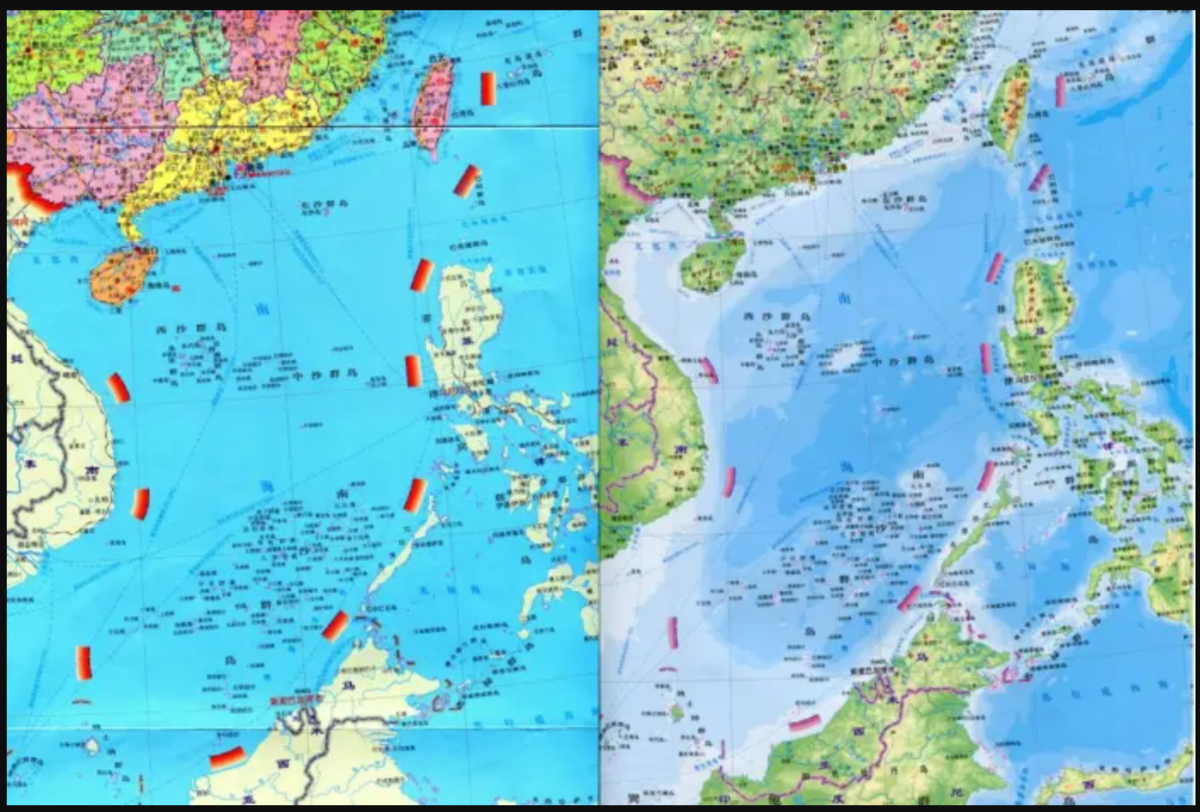The Kahana in China Part 6: Kaifeng

As mentioned in Part 5 of this series, there were several important fragments of information that were provided to me by last remaining members of the Kaifeng Jewish community that corresponded to stories that I had garnered from family traditions and were in contradiction of current histories of this community which are now circulated widely amongst Jewish Historians. One of my fundamental beliefs is that in order to know where you are going, in which direction you will evolve, you must first know and understand where you originally came from. You must have this anchor into the past in order to avoid being cast upon the waves, floating randomly into oblivion. For that reason, it was my hope to help define the origins to the Kaifeng community, not only for my own purpose of writing stories but to provide this essential anchor of survival for the Jews of Kaifeng. Since I wrote my last article, there have been several comments made that my desire to preserve the community and see that it survives intact is both misguided and in conflict with the 'in-gathering' of the Jews into the Land of Israel. That it was their desire to transplant the last remnants of this near-extinct society to the land of Israel and forever extinguish the light of Judaism that once flourished in this great Asian Empire. If that supposition of the 'in-gathering- was correct, then it entirely defeats the instruction of Yahweh that we should be a 'Light Unto the World'. One does not shine a light in Jerusalem and hope that it will be seen in Beijing. The only light one actually sees is the one that shines brightly in their own home, and should that home be in Kaifeng, then that is where we must ensure that it thrives. So what were these important pieces of information that were provided to me that the community was not even aware of when they mentioned it me in passing? Let me elaborate on the first one concerning ORIGINS.
The Tang Dynasty
It is now currently proposed by most Jewish historians that the origins of the Kaifeng community originated in the Song and Yuan Dynasties. The Song Dynasty was a period of rapid growth beginning in 960 AD and continuing until 1279 AD when it was completely replaced by the subsequent Yuan Dynasty. The Yuan Dynasty being synonomous with that of the Mongol Empire flourished between 1271-1368, established by Kublai Khan. Though he had been preceeded two generations earlier by Genghis Khan, it was not until Kublai Khan that the east-west trade routes were widely opened again and trade became economically feasible once more. During the earlier Mongol periods, war and civil unrest with the Song Dynasty made it difficult to use the old Silk Road that had been established in the first century BCE. Therefore trade with the Southern Song was normally via the sea routes which meant limited access to the interior of the nation.
The Songs ruled from two capitals, Kaifeng in the North and Hangzhou in the South, but all this changed with the coming of Kublai Khan whom established his capital called Dadu in what is now known as Beijing. But the community mentioned to me that in their historical memories, they did not originate in Kaifeng but had come from another city en-masse. In fact they migrated as a group of 100 families according to their tradition. And furthermore they knew this move occurred during the time of the Tang Dynasty, long before that of the Song or the Yuan.
The Tang Dynasty was established in 618 AD and continued until 907 AD. It held its capital at Chang'an, or modern day Xian which is 307 miles to the west of Kaifeng. Though today 307 miles does not seem an incredible distance to cover, in those days, for a large migration of families, travelling predominantly on foot, it easily could have been two months or longer. But as merchants and traders, as historians attribute the founding of the Jewish community in China, it makes little sense why the community would impose a self-exile under such collosal hardship unless it truly did move with a change and transition of government from the Tang to the Song as part of the Imperial court or adjunct to the court as often was the case in European governments witht their court Jews. But again the distance is not easily accounted for unless the Jewish community happened to be at a midway point between the two capitals. This would mean that the Jews originated from Luoyang, the ancient capital of the Xinbei which preceded the Tang Dynasty a time corresponding to the legends of the Princess Ti-Ping that was wed to Mar Zutra Kahana as mentioned in my previous article.
It Began In Luoyang
During my many travels within China I visited the ancient city of Luoyang, in order to see first hand how this inland city could have harboured the greatest legend passed down through my family; a legend which was one of the most significant reasons that the Rabbis forbid the mention of Mar Zutra's name upon the lips of their followers. Though they accused him of the crime of marrying his step-mother, of somehow baring responsibility of his father's death (the Jewish version of the Oedipus story), ordering the imprisonment of the leaders of the Beth Din, and ultimately the cause of the death of thousands of our people by leading a revolt against the Great Shah, that they themselves condemned, what they resented foremost was his marriage to a Chinese Princess, a story which they purposely concealed by claims that his sons Mar Zutra III and Mar Yanqa were one of the same, born by his stepmother. A story fortunately well preserved within my family and which will never be forgotten and one which I find more and more factual evidence during my stay in China. But all that is another tale to be told another day. What I will talk of now is the marvel of Luoyang, an inland city, reachable by the shallow keeled sailing ships from Persia. To watch as the Luo River moves steadily towards the Yellow River is a marvel unto itself. The breadth and stature of the Yellow River as it extends well into the heartland of China is without doubt, a wonder of the world. Suddenly it becomes clearly visible how this city could be reached by grand ocean worthy sailing ships with only a short trek between the mouth of the Luo to the city as was the case related to me in the story of how many of the citizens of Mahoza, location in present day Iraq, fled from the city in 506 AD and voyaged to China. With the transition of the Empire from the Xinbei to the Tang, those fighting men of Mar Zutra that fled to the orient may have been considered a threat by the new Emperor (the princess was Xinbei and therefore Mar Yanqa could be considered an alternative ruler), and therefore the Tang may have forced the Jews to remove themselves further from their new capital and hence their arrival in Kaifeng during the Tang period just as the present day descendants of those Jews have informed me. Kaifeng, which is located east of Luoyang with its two month marching distance from the Tang capital would have been considered safe to both parties.
As merchants, it would have made no sense that the Jews removed themselves further distant from the Tang capital as anyone in international trade can tell you. Yet that is exactly what they did with their migration under the Tang. So let us assume, that perhaps they weren't merchants but something entirely different as the legend of Mar Zutra as told by my family suggests. Something to ponder while I write the next article concering another bit of information the community told me.
Avrom Aryeh-zuk Kahana






